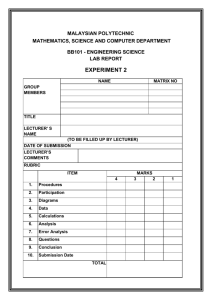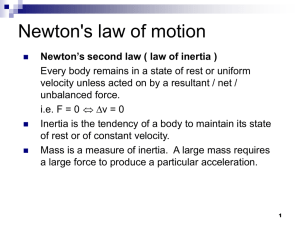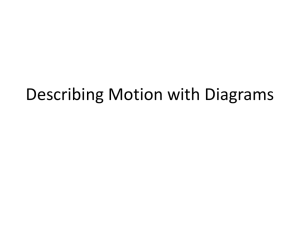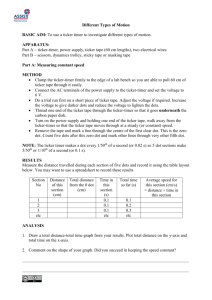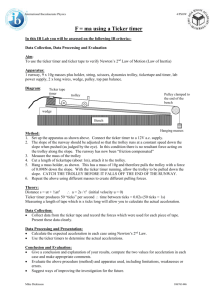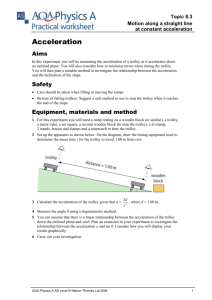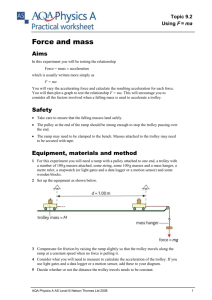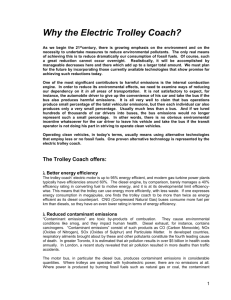Experiment: To show that the acceleration of a body is proportional
advertisement
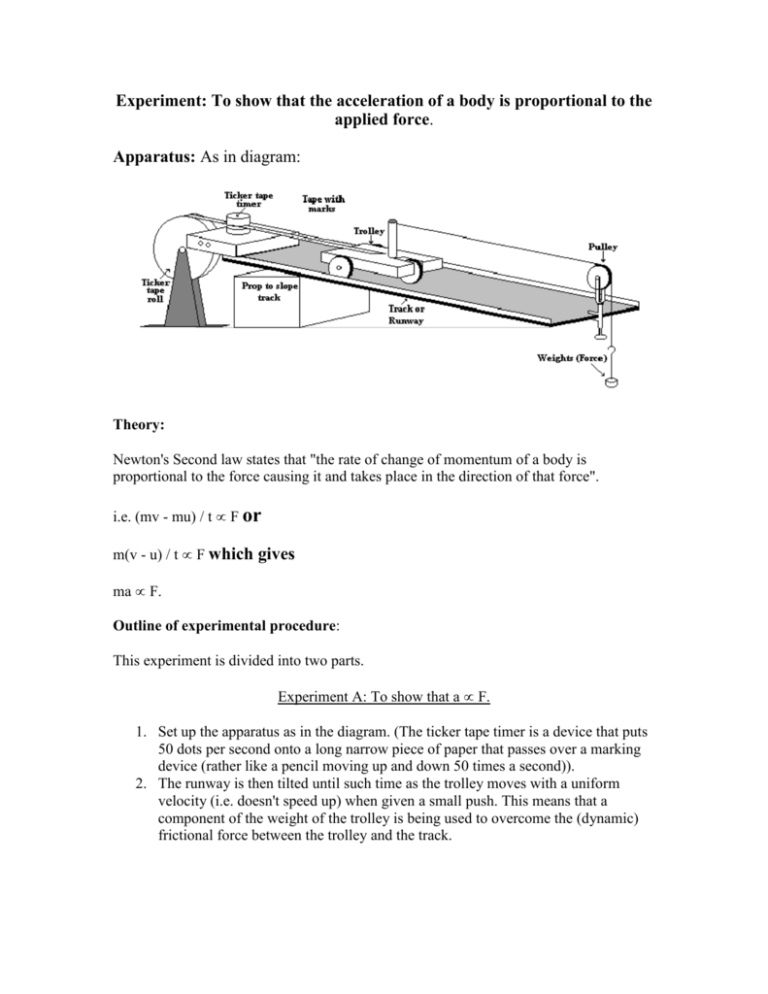
Experiment: To show that the acceleration of a body is proportional to the applied force. Apparatus: As in diagram: Theory: Newton's Second law states that "the rate of change of momentum of a body is proportional to the force causing it and takes place in the direction of that force". i.e. (mv - mu) / t F or m(v - u) / t F which gives ma F. Outline of experimental procedure: This experiment is divided into two parts. Experiment A: To show that a F. 1. Set up the apparatus as in the diagram. (The ticker tape timer is a device that puts 50 dots per second onto a long narrow piece of paper that passes over a marking device (rather like a pencil moving up and down 50 times a second)). 2. The runway is then tilted until such time as the trolley moves with a uniform velocity (i.e. doesn't speed up) when given a small push. This means that a component of the weight of the trolley is being used to overcome the (dynamic) frictional force between the trolley and the track. 3. A force of 0.1 N (i.e. a mass of 100g) is placed on the scale pan and this causes the trolley to accelerate down the track. 4. The trolley itself has a number of 0.1N weights so that different weights can be transferred to the scale pan when repeating the experiment for different forces. 5. As the trolley moves, the ticker tape, which is attached to it, passes through the ticker tape timer and the resultant dots can be used to find the acceleration. To calculate the acceleration: a. Select two sets of 11 dots (10 spaces) at either end of the tape b. The time for the trolley to travel the distance between 11 dots (10 spaces) is 10(1/50) s. c. The distance between the dots can be measured with a metre stick. The average velocity (taken as the instantaneous velocity at the central dot) is calculated from speed = distance / time. This method can be used to find the initial velocity (u) and the final velocity (v). o Measure and record the distance between ten spaces near the starting point but ignoring the first few dots’ as this was where you gave it a gentle push. Initial Velocity, U, can be found by Velocity = Distance / Time We take the time to be 0.2 as we measure ten spaces, therefore 10/50 as there are ten dots produced per second. o Now measure and record the distance between ten spaces near the end of the tape just before you stopped the trolley. Final Velocity, V, can be found by Velocity = Distance / Time We take the time to be 0.2 as we measure ten spaces, therefore 10/50 as there are ten dots produced per second. d. The acceleration can then be found from the formula v = u + at. Acceleration = Final Velocity - Initial Velocity time Results: F/N d1 / m u = d1/t / ms-1 d2 / m v = d2/t / ms-1 A = (v-u)/t / ms-2 F/N Acceleration / ms-2 Conclusion: A straight-line graph through the origin shows that F is directly proportional to a. (the slope of this graph actually gives us the mass of the trolley.)
